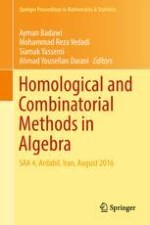Based on the 4th Seminar on Algebra and its Applications organized by the University of Mohaghegh Ardabili, this volume highlights recent developments and trends in algebra and its applications. Selected and peer reviewed, the contributions in this volume cover areas that have flourished in the last few decades, including homological algebra, combinatorial algebra, module theory and linear algebra over rings, multiplicative ideal theory, and integer-valued polynomials. Held biennially since 2010, SAA introduces Iranian faculty and graduate students to important ideas in the mainstream of algebra and opens channels of communication between Iranian mathematicians and algebraists from around the globe to facilitate collaborative research. Ideal for graduate students and researchers in the field, these proceedings present the best of the seminar’s research achievements and new contributions to the field.
